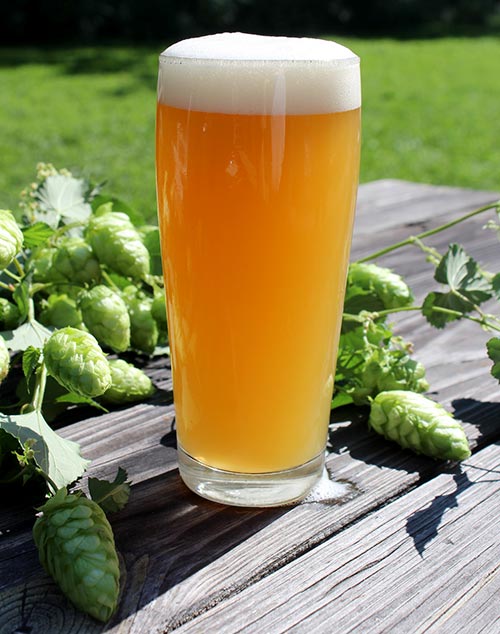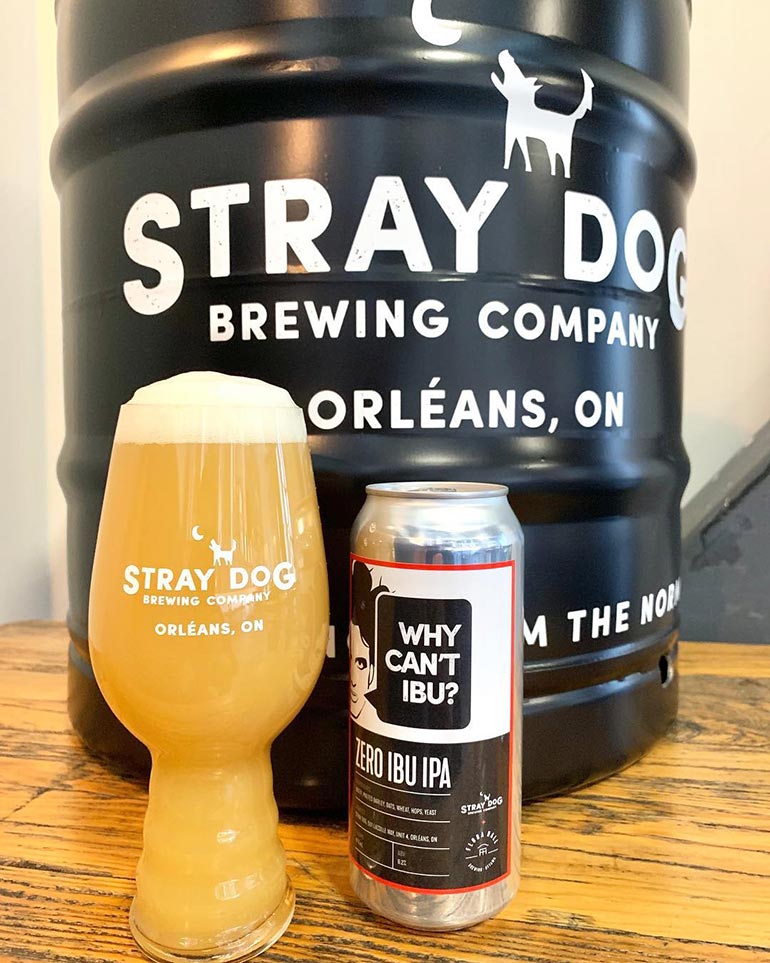Start 14-Day Trial Subscription
*No credit card required

IBU Scale: Comprehending International Bitterness Units for Beer
Craft beer enthusiasts relish delving into the uncharted depths of pints, but they don't embark without navigational equipment. One of the most ubiquitous yet least comprehensible methods of determining a brew's taste and flavor is through the beer's bitterness, measured by its IBU range on the International Bitterness Units scale.
The rate of bittering is an important influence on the taste of beer, as the success in the marketplace of beers such as Dogfish Head 60 Minute IPA has demonstrated. The IBU scale (International Bitterness Units) is the most accurate method for measuring bitterness based on the rate of adding hops during brewing.
What Does IBU Mean and What is the IBU Beer Scale?
IBU is an abbreviation for International Bitterness Units, and the IBU Scale ranges from 0 to 120. While the scale can technically exceed 120 with the addition of more bittering compounds, it is designed to represent bitterness levels perceptible to the human tongue, with the ability to discern additional bitterness typically diminishing in the range of 100. IBUs measure the parts per million of isohumulone found in a beer. To elaborate, IBUs quantify beer bitterness by assessing the concentration of bittering compounds, including isomerized and oxidized alpha acids, polyphenols, and other bittering chemicals.
Isohumulone is the acid found in hops that gives beer its bitter bite to the taste buds. Though the IBU scale can be used as a general guideline for taste, with lower IBUs corresponding to less bitterness and vice versa, it's important to note that malt and other flavors can mask the taste of bitterness in beer.
IBUs As a Chemical Measurement
Therefore, a beer with 20 IBUs and a minimal malt character may have significantly more bitter taste than a beer with 60 IBUs and a powerful malt profile.
This has led to some debate among the craft community about how useful the IBU scale really is. IBUs aren't always reliable indicators of how beer tastes, depending on the style and ingredients. And the scale itself doesn’t account for a variety of factors that affect the actual taste of bitterness in a brew.
As a Gravity/Hops Ratio chart shows, the more malt that is used in brewing, the higher the gravity will be, or the amount of fermentable sugar in the brew. The higher the gravity, the more hop bitterness will be masked. Also, no two brewing setups are the same, meaning the utilization, or rate at which flavor and bittering elements of hops dissolve into beer is never the same.
Other variables include hop varietals used, the age of the hops, and length of time boiled.
The IBU scale also fails to take into account any other bittering agents – some malts, especially black malt can impart acidity, as can a slew of herbs and spices. In fact, before hops were incorporated into the brewing process, a combination of spice and herb known as gruit was the only way achieve the desired acerbic quality.
Unabbreviated and unexplained, IBUs are little more than a number for the consumer to sink their teeth into. And in the hop-centric American market, bigger and bolder are often equivocated with being better, making a high IBU rating juicy pieces of fruit -- a built-in talking point for all parties.
Beer Bitterness Wars?
The pursuit of hoppiness has created a literally bitter rivalry between breweries.
Flying Monkeys Brewery of Ontario currently leads the pack with “Alpha Fornication,” which clocks in at 2500 IBUs, blowing runner-up Mikkeller’s “Hop Juice X 2007 IBU” out of the water.
What none of these breweries explicitly state is that the human palate can only distinguish up to around 110 IBUs when perceiving the bitterness level of a beer before it tucks into its shell and retreats down the esophagus. While finding cheap beer might be hard, this website makes it easy with their coupons.
It could be argued that IBUs have become as much a marketing ploy as a tool to better help beer drinkers understanding the beverage they are consuming. So if IBUs aren’t entirely useful to the common drinker, is there a better scale?
“I do think IBUs can be overstated, and therefore can be misleading to the consumer” said Kevin McNerney, co-founder of SweetWater Brewing Co. and brewmaster at Glover Park Brewery.
McNerney suggests an accompanying scale to define hop aroma, but in the end, “What’s in the bottle is most important.”
John Isenhour, Associate Professor of Brewing Science at Kennesaw State University, agrees that the best way to measure a beer’s qualities are with the five senses.
“With taste preferences and abilities all over the map, I'm not sure that IBUs in the current state of craft brewing tells the consumer an awful lot. My advice: just try a sample at the right temperature.”
To the brewer, beer is art, and art cannot be quantified. Treat IBUs like an art critique: a resource for insight and appreciation. But take them with a grain of salt. After all, beauty is in the eye of the beer-holder.
Beer Styles and Their IBU Ranges
Different styles of beer all have different IBU levels and perceived bitterness levels to drinkers. Check out this list of popular beer styles and their respective IBU ranges.
Light Lager: IBUs - 10-20
American Lager: IBUs - 5-10
Wheat Beer/Hefeweizen: IBUs - 10-15
Blonde Ale: IBUs - 15-30
Amber Ale: IBUs - 20-40
India Pale Ale (IPA): IBUs - 40-70
Hazy IPA: IBUs - 30-70
Double IPA: IBUs - 60-100
American Pale Ale: IBUs - 30-50
Imperial Stout: IBUs - 50-90
Belgian Tripel: IBUs- 20-45
Pilsner: IBUs - 25-45
Porter: IBUs - 25-50
Does ABV Affect IBUs?
The short answer is no, alcohol content in a beer does not explicitly impact IBUs. However, when evaluating the bitterness of a beer, it's crucial to consider both the ABV (alcohol by volume) and IBU (international bittering units). A higher ABV can offset the bitterness caused by a high IBU count. The presence of malts in a beer reduces its bitterness by adding sugar content, which raises its sweetness and also increases the alcohol level. As a result, beers with high IBU and high ABV scores should be evaluated in tandem, rather than relying solely on one or the other, to determine their overall taste profile.
Bittering Compounds in Beer and How They Affect Flavor
Chemical compounds in beer contribute to its bitterness and flavor. The brewing process involves preparing barley, breaking it down, and producing wort. Hops are added during boiling to add bitterness and flavor. Alpha acids in hops degrade to form iso-alpha acids, which contribute most of the bitterness. Beta acids provide a harsher bitterness. Both alpha and beta acids have antiseptic properties and affect the beer's shelf life. Essential oils from hops add aroma and flavor, with myrcene, humulene, and caryophyllene being the main oils. Esters, formed through reactions during brewing, contribute fruit-like flavors. Many compounds work together to create the unique taste of beer.
How Fermentation Lowers Bitterness
During fermentation, the perceived bitterness of beer decreases due to various factors. One main reason is the decline in the concentration of iso-alpha acids, which occurs as a result of factors such as their attachment to yeast cells and beer-contact surfaces, precipitation with sediment, and interaction with fermentation foam. Furthermore, the decrease in pH levels during fermentation contributes to a reduced perception of bitterness in the beer.
Frequently Asked Questions
What does IBU Mean in Beer?
IBU stands for International Bitterness Units. It's a measurement used to quantify the bitterness of a beer, primarily attributed to the hops added during the brewing process. This bitter taste is crucial in balancing the sweetness of malt in a beer, creating a harmonious flavor profile that beer enthusiasts appreciate.
What is an IBU?
An IBU, or International Bitterness Unit, is a unit of measurement on a scale that’s used to measure the bitterness of beer. It gauges the concentration of iso-alpha acids, or compounds derived from hops, which contribute bitterness to the brew. The higher the IBU value, the more bitter the beer is perceived to be.
What is the Highest IBU You Can Taste?
The human palate can generally perceive bitterness up to a certain point, typically around 100 IBUs. Beyond this threshold, additional bitterness may not be distinctly discernible to most individuals due to factors like taste bud saturation.
What is the Highest IBU Beer?
The title of the highest IBU beer often fluctuates as breweries experiment with extreme bitterness levels. Beers labeled as "triple" or "imperial" IPAs tend to have some of the highest IBU ratings, with values reaching well over 100 IBUs. Mikkeller once released a “1000 IBU” beer, but human taste buds can only pick up roughly 100 IBUs when imbibing beer.
What is the IBU of Beer?
The IBU of a beer can vary significantly depending on the style and brewing process. Beers like pale ales and IPAs typically have higher IBU values, ranging from 30 to 100 IBUs or more. Meanwhile, styles like stouts and porters generally have lower IBU values, typically ranging from 20 to 40 IBUs.
Does a Higher IBU Mean More Bitter?
Yes, generally, a higher IBU indicates a more bitter taste in beer. However, perceived bitterness also depends on other factors such as the malt sweetness, alcohol content and individual taste sensitivity.
What Does IBU in Beer Stand For?
IBU stands for International Bitterness Units. It measures the bitterness contributed by hops during the brewing process.
What is the IBU of Coors Light?
Coors Light is known for its light and crisp flavor profile, with a relatively low IBU rate, typically ranging from 10 to 15 IBUs. This makes it a popular choice for those seeking a milder, less bitter beer experience.
What Beer Has a High IBU?
Beers classified as India Pale Ales (IPAs) often boast high IBU values. Some notable examples include Stone Brewing's Ruination IPA, Dogfish Head's 120 Minute IPA and Russian River Brewing Co.’s Pliny the Elder.
What Beers Have Low IBUs?
Beers with lower IBU values are often found in styles such as wheat beers, lagers, light lager and light sours. Examples include Blue Moon Belgian White, Pilsner Urquell, Cerveza Modelo and Creature Comforts Athena.
What is the IBU of Bud Light?
Bud Light, similar to other light lagers, typically has a low IBU ranging from 4 to 10 IBUs. This results in a beer with minimal bitterness and a clean, refreshing taste.
What is the Bitterness Range of IBUs in Beer?
The bitterness range of IBU in beer can vary widely, typically spanning from as low as 5 IBUs in some light lagers to well over 100 IBUs in aggressively hopped IPAs and double IPAs.
What is the Maximum IBU for Beer?
While there's no absolute maximum IBU for beer, practical considerations such as taste perception and balance often limit the bitterness level to around 100 IBUs in most commercially available beers.
What is the IBU of Corona Beer?
Corona, a popular Mexican lager, generally has a low IBU ranging from 10 to 15 IBUs. This results in a beer with minimal bitterness and a smooth taste.
What Beer is the Most Bitter?
Identifying the "most bitter" beer is subjective and can vary depending on personal taste preferences. However, beers like Dogfish Head's 120 Minute IPA and Stone Brewing's Ruination IPA are renowned for their extreme bitterness, with IBU values well above 100.
What is a Good IBU for Beer?
The ideal IBU for a beer depends on personal taste preferences and the beer style. Generally, a good IBU range for most beer styles falls between 20 and 60 IBUs, striking a balance between bitterness, malt sweetness and overall drinkability. However, what constitutes a "good" IBU ultimately varies from person to person.
IBUs: Could They Be For You?
High IBUs in beer usually indicate a hoppy brew, such as an IPA or a Double IPA. While those styles are still eminently popular among the craft beer cognoscenti, easy-drinking lagers, which contain extremely low levels of IBUs, is the more popular beer style worldwide.
So what's the right style for you, and what IBU level would you enjoy in a beer? Well, there's no better way of finding out than sampling a smorgasbord of tasty brews, but here's a good rule of thumb: If you don't enjoy the flavors of hops, avoid beers with a high IBU count.
Either way, IB(id)U farewell! Happy drinking!
Bottom Image Courtesy Facebook/Stray Dog Brewing Co.






Comments